It's the perfect time to enjoy a beloved Czech dish that brings back childhood memories! What might that be, you ask? It is Šunkofleky, a creamy noodle and ham casserole that makes the perfect comfort food for any occasion.
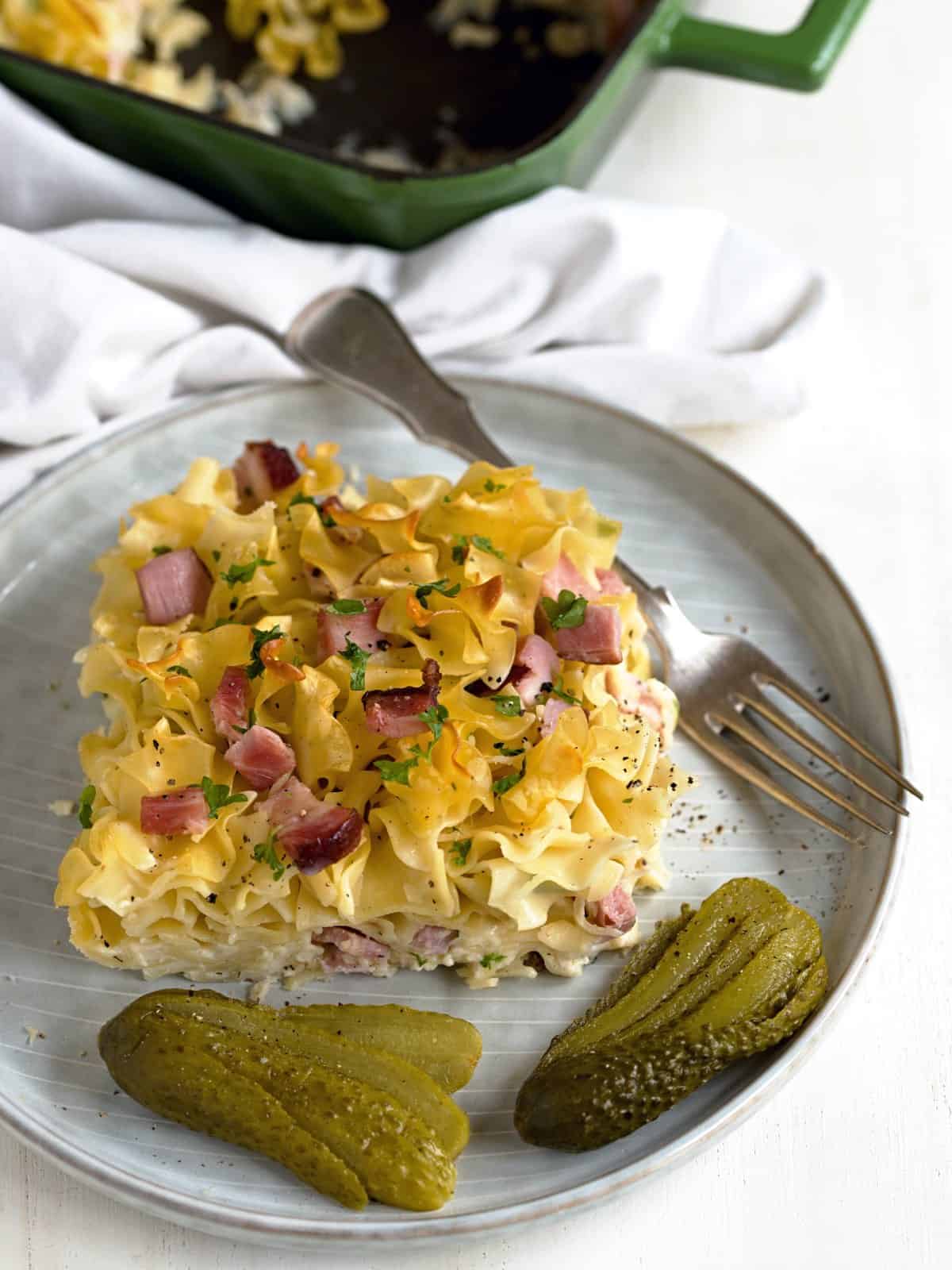
➜ What is Šunkofleky?
Šunkofleky is a delicious Czech old-school meal made with tender cooked noodles and diced ham. This comforting base is then covered with a rich blend of milk, cream, and eggs and baked in the oven. Served as a hearty main course, Šunkofleky casserole promises a satisfying and flavorful dining experience.
TIP: These Czech dill pickles are traditionally served with Šunkofleky.
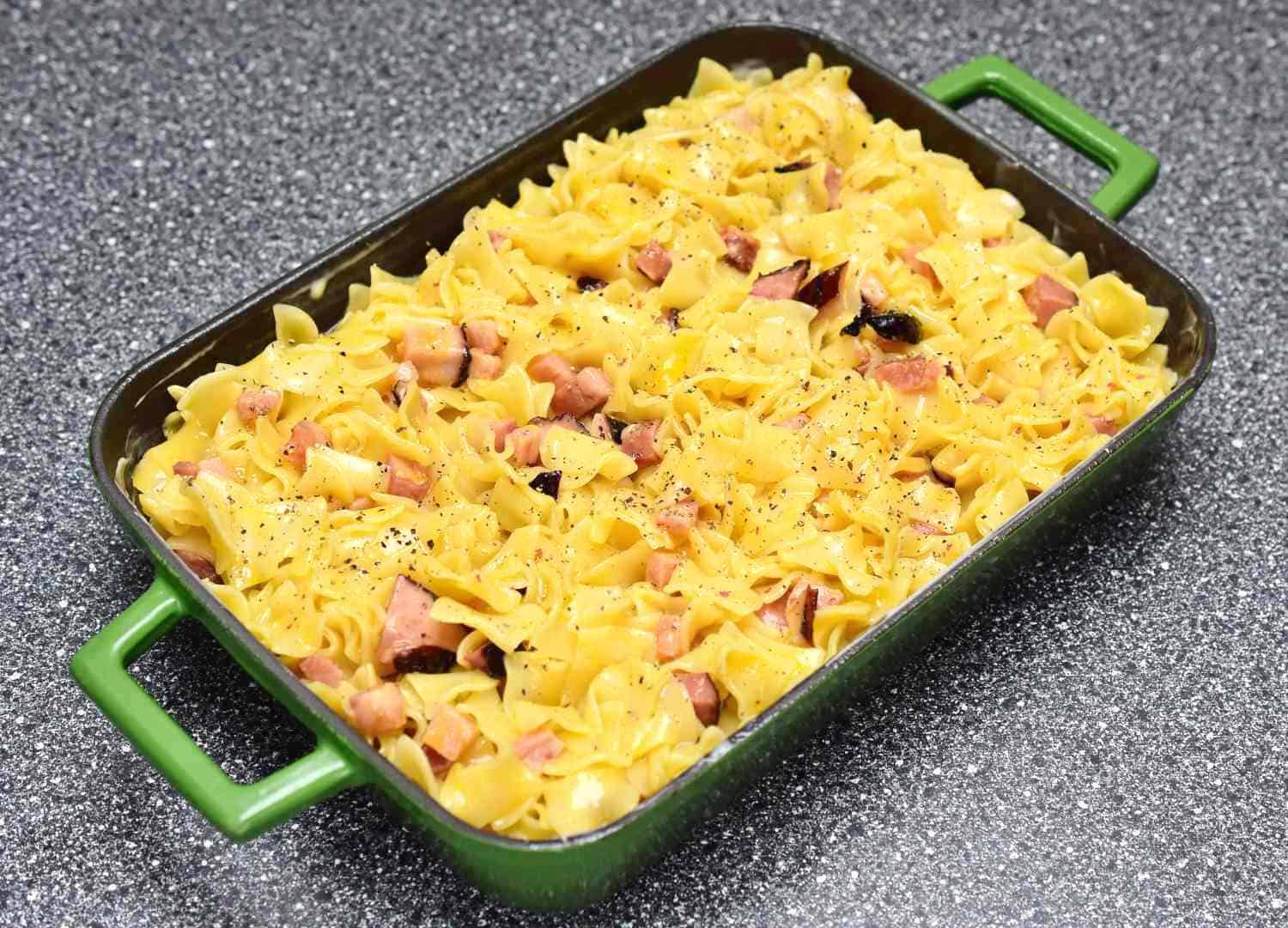
➜ Pronunciation
I have recorded a short audio clip on the pronunciation of the Czech word "Šunkofleky" (ham and noodle casserole). Feel free to click and listen.
What does the Czech word "Šunkofleky" mean? Well, it is quite literal: "Šunka" translates to "ham" and "fleky" refers to a type of pasta. So when you hear "Šunkofleky," think of a delicious bake where ham, pasta, and milk come together to create a delectable meal.
Interested in Czech cuisine? Discover more authentic Czech food!
➜ Ingredients
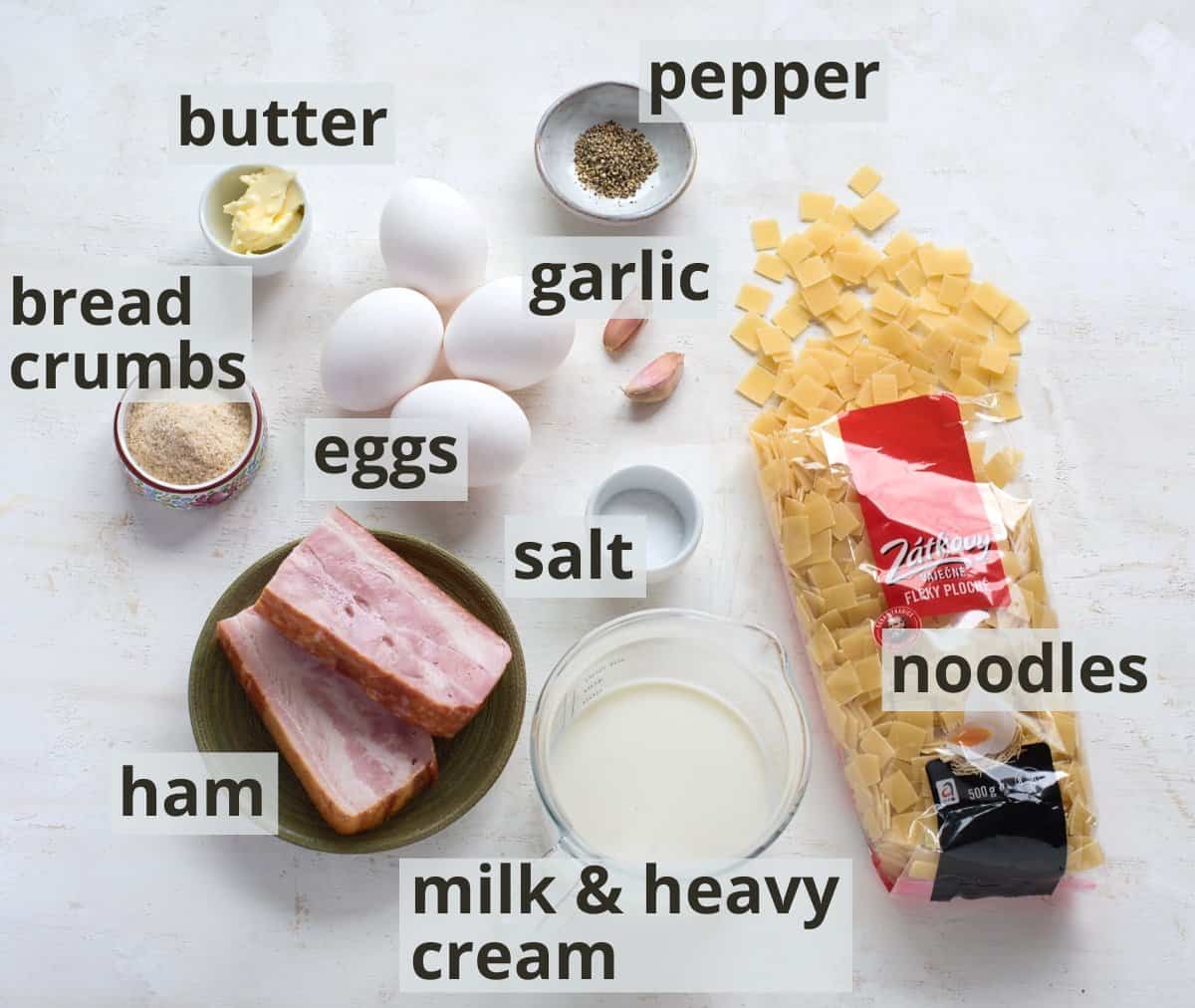
With just a few essential ingredients, this recipe produces a truly marvelous outcome. To make Czech Šunkofleky, you will need:
- Fleky-pasta; actually, these are wide noodles cut into squares. Czechs call it Fleky or Flíčky. If you can't find this type of pasta, use any other shape. For example, elbow pasta (kolínka) or fusilli (vřetýnka) work great.
- Diced, cooked ham; any leftover ham you have will also be fine.
- Knob of butter; to fry ham in
- Eggs
- Whole milk + heavy cream; for a perfect creamy texture. The mixture of milk, heavy cream, and eggs blends perfectly with the pasta, creating a compact meal that stays together when served.
- Garlic; fresh cloves
- Salt and pepper; to taste
- Butter + breadcrumbs; to grease and dust the baking dish
For serving (optional but recommended): Dill pickles, chopped parsley leaves
✅ You’ll find the exact amount of ingredients below in the recipe card, which you can also print out.
➜ How to make Czech Šunkofleky
Make ahead
STEP 1: Grease the baking dish with a pat of butter or another solid fat and sprinkle it with breadcrumbs. Gently tap the dish on the work surface to remove any excess breadcrumbs.
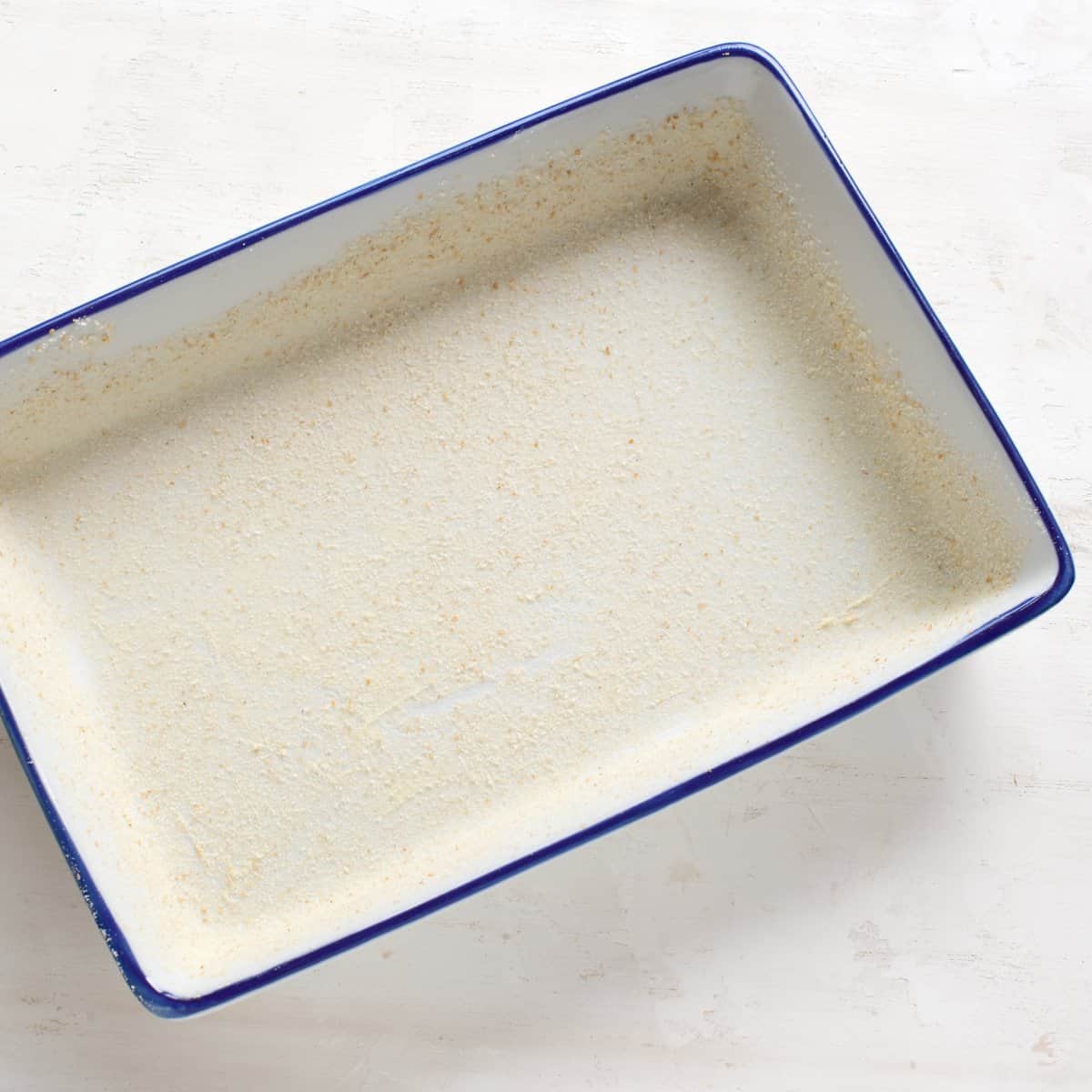
A layer of breadcrumbs will prevent the pasta mixture from sticking during baking. If you are using a nonstick baking dish, you can skip this step.
STEP 2: Peel and press the garlic cloves.
Cook pasta
STEP 3: Cook the pasta in salted water until tender, then drain. Follow the manufacturer's instructions on the packaging.
Fry diced ham
STEP 4: While the pasta is cooking, dice the ham into 1/3-inch (0,7 cm) pieces. Heat a skillet over medium-high heat and let a knob of butter melt in it.
Add the ham cubes and cook, stirring constantly, until their edges begin to brown. This will take about three to five minutes.
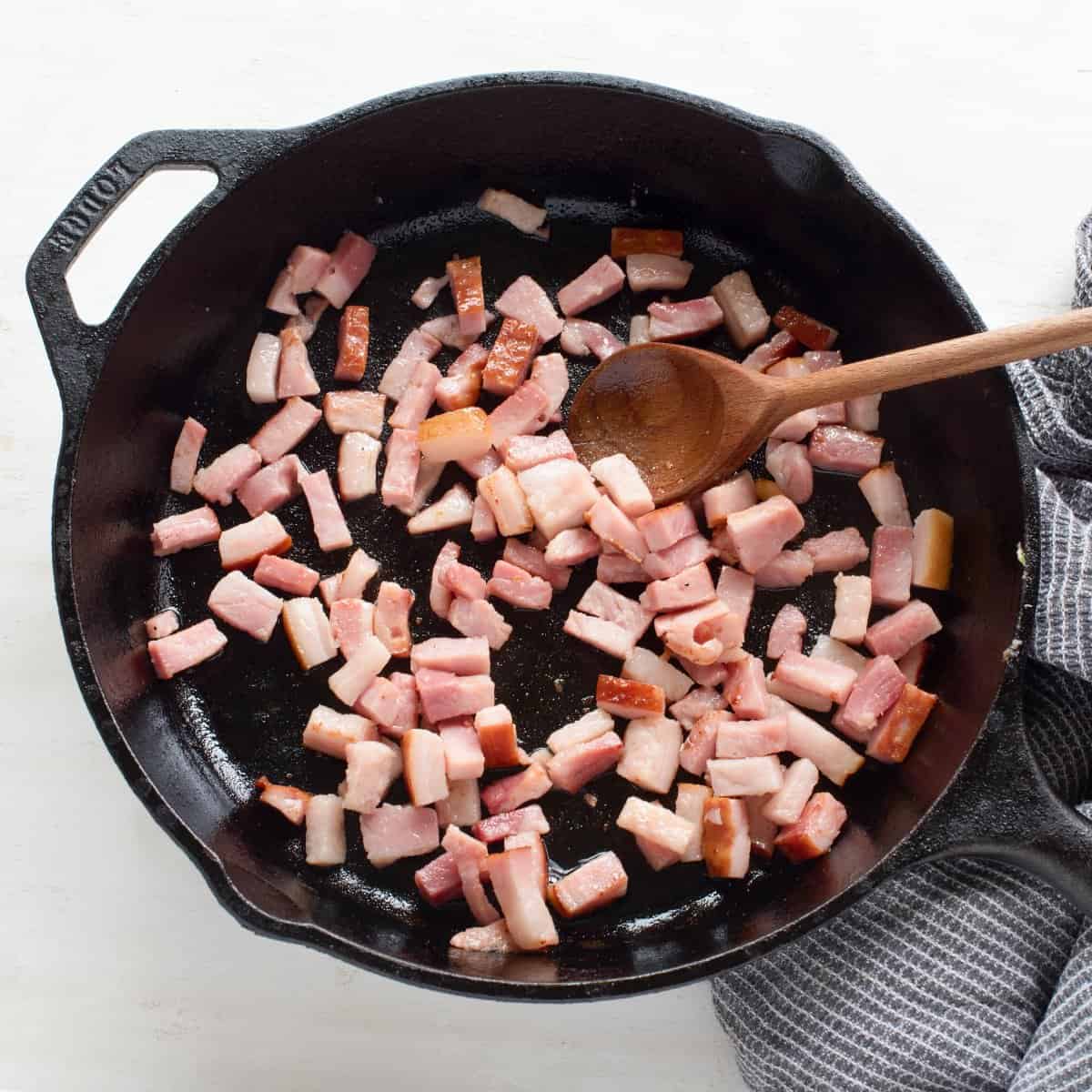
Make eggy mixture
STEP 5: Pour the milk and heavy cream into a large enough container. Add the eggs and beat them with a hand whisk until a creamy, yellowish mixture forms.
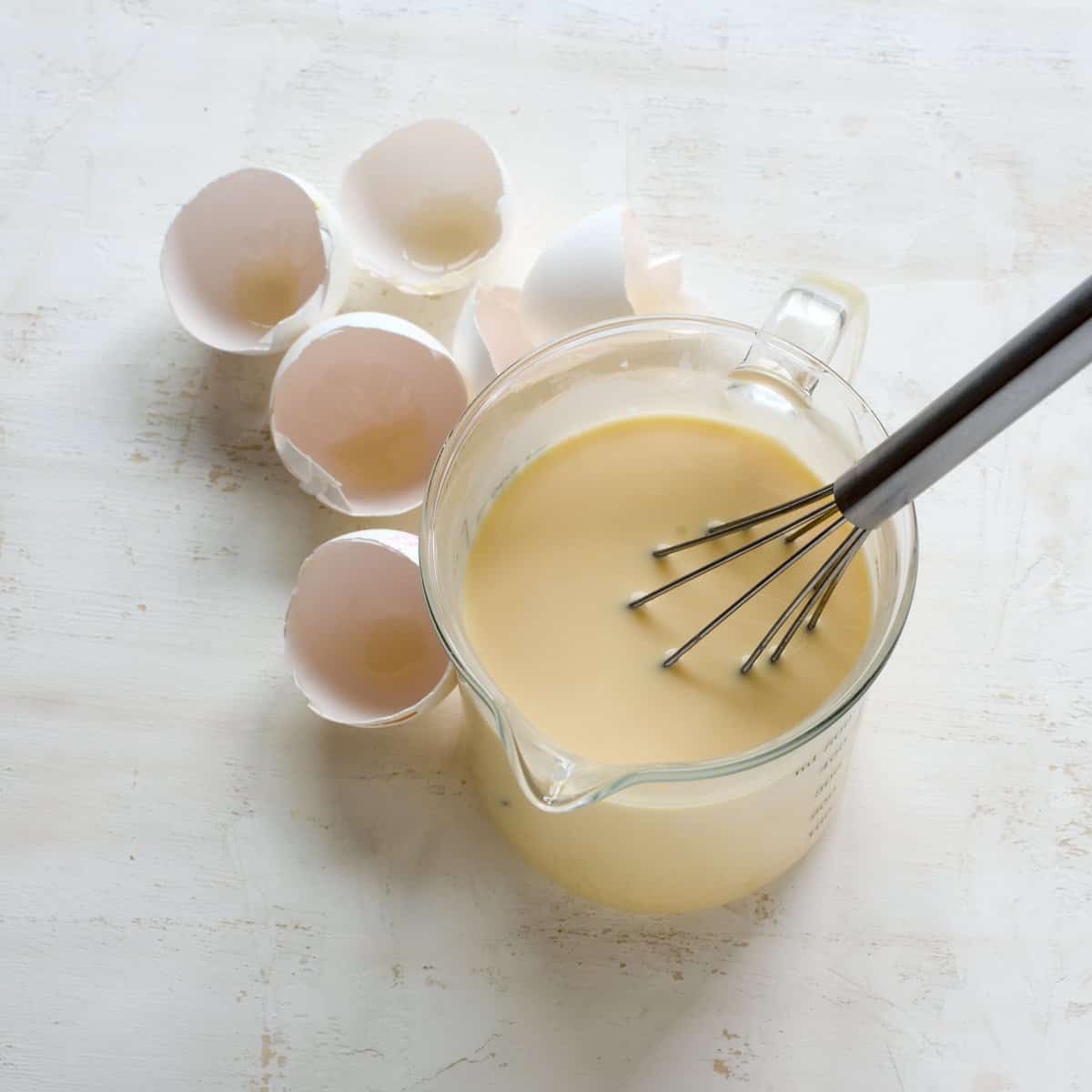
Assemble
STEP 6: In a large bowl, combine the hot, drained pasta with the fried ham. Season with salt and pepper, and add the pressed garlic. Mix well. Finally, pour in the milk and egg mixture. Stir again thoroughly.
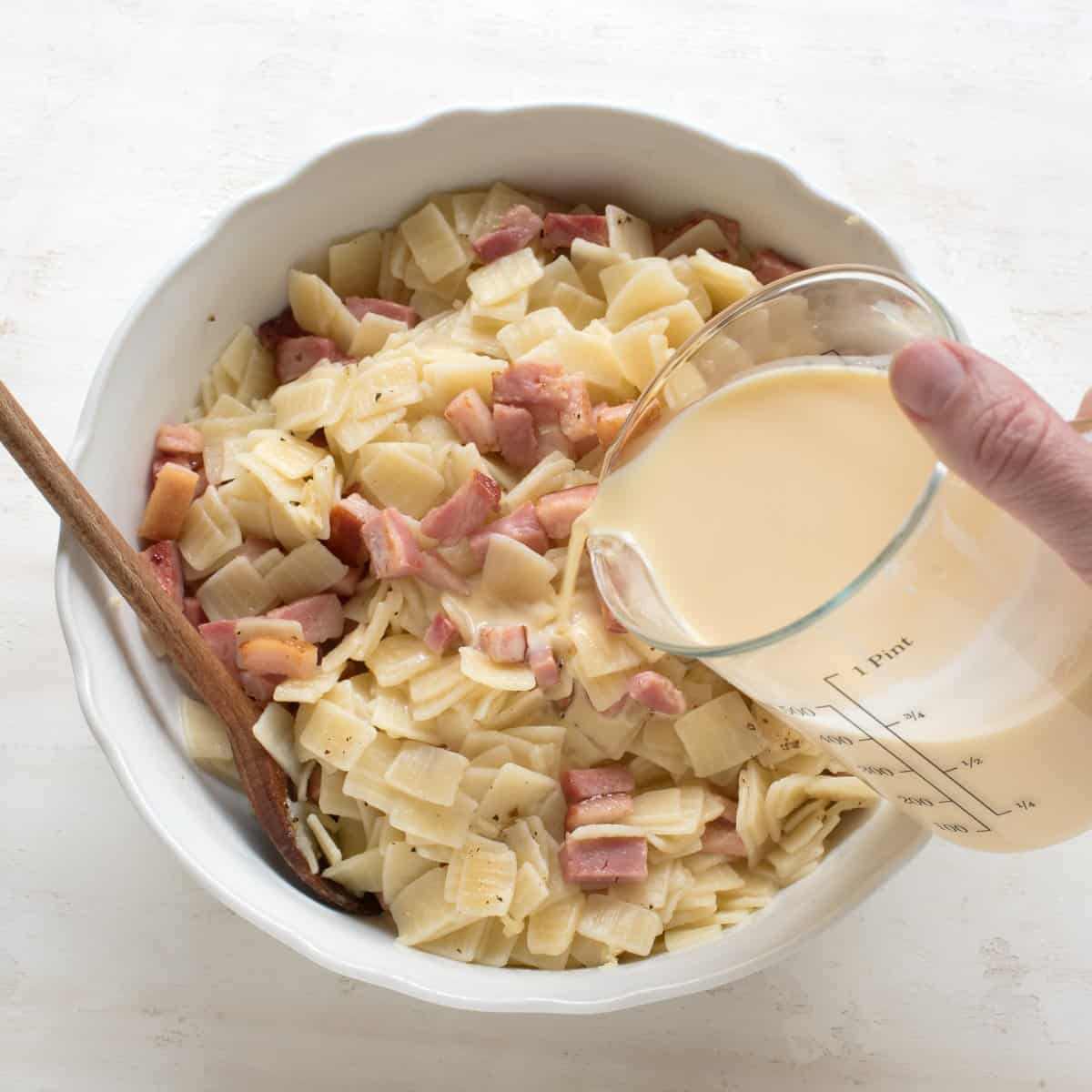
STEP 7: Carefully transfer the mixture into the prepared baking dish, smoothing the surface evenly.
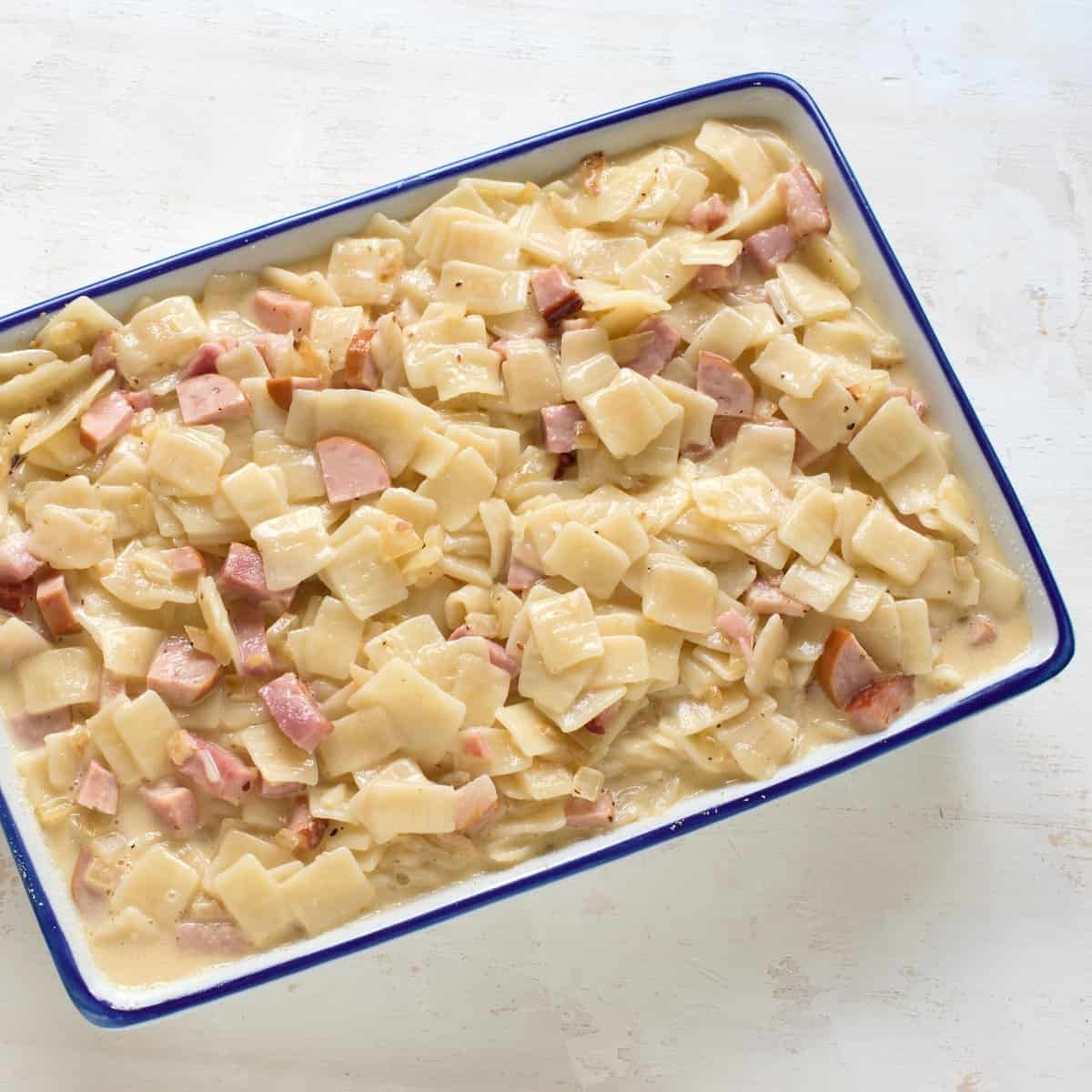
Bake the casserole in the oven
STEP 8: Preheat the oven to 325°F (170°C), using the top and bottom heat, not the fan-forced circulation. Place the pan on the middle rack and bake for 30 minutes. Then turn off the oven without opening it, and leave the casserole sit in the oven for another 15 minutes to finish cooking.
Note: Slow baking at a lower temperature keeps the surface of the pasta from drying out and keeps the interior perfectly creamy. Baking at higher temperatures and using fan-forced circulation could easily cause the pasta on the top layer to turn too hard, which would spoil your eating experience.
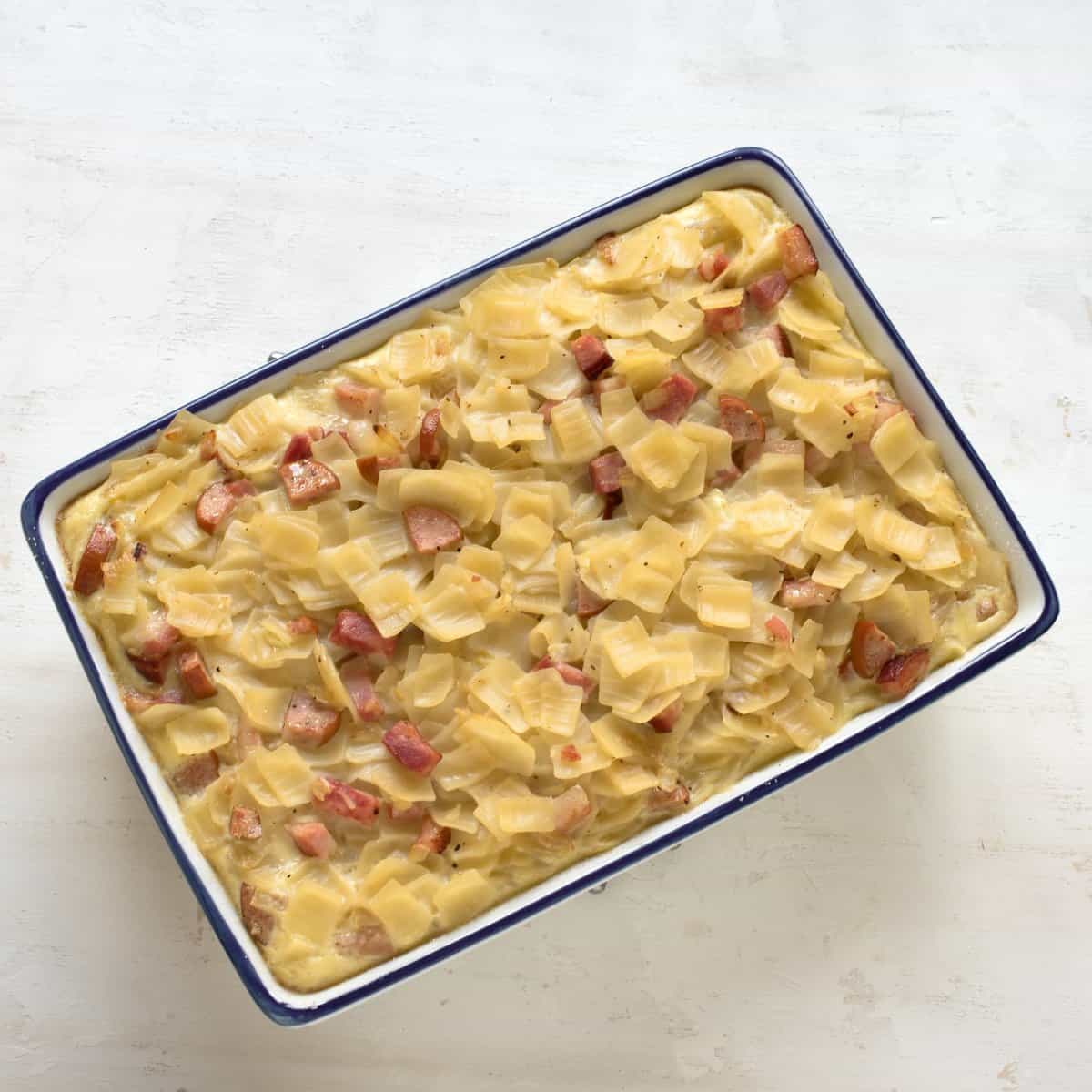
Attention! If you're using a cast iron or other heavy-duty baking dish, add 10 minutes to the baking time. Such a pan will need more time to heat up initially.
➜ Serving
Once the Šunkofleky have finished baking, remove the baking dish from the oven and place it on a cooling rack.
Serve the Šunkofleky warm. Cut the casserole into squares measuring about 5x5 inches (13x13 cm). Place each portion on a plate, and if desired, sprinkle with chopped parsley leaves. A pickled cucumber is also a great accompaniment to this bake.

Note: Hot Šunkofleky casserole may tend to fall apart when sliced. This is normal, so don't worry. As the dish cools, it will firm up and hold its shape better. It will taste just as delicious in both scenarios!
➜ Tips on storage
- In the fridge: Cover the cold dish with foil and store it in the refrigerator, where it will last for up to five days.
- In the freezer: Šunkofleky freezes wonderfully! Cut the leftovers into individual servings, place them in an airtight container, and store them in the freezer. Consume within three months.
- How to reheat? I have found the best way is to warm up the Šunkofleky in a skillet with melted butter. I slice the serving into bite-sized pieces and fry them on all sides over medium heat.
➜ Useful tips
- Enhance your Šunkofleky by adding chopped onion to the skillet when frying the ham (see STEP 4).
- You can incorporate other leftovers from the fridge into the pasta and ham mixture, like canned peas, or sprinkle grated cheese on top od Šunkofleky when serving
- Bake Šunkofleky a pan uncovered, without a lid.
More Czech dishes:
- Rajská omáčka – Czech sweet tomato gravy
- Smažený sýr – breaded and fried cheese (in Czech known as "smažák")
- Holandský řízek – Dutch or Holland Schnitzel (but typical Czech!)
Tried this recipe?
Leave a review down in the comments! ⭐⭐⭐⭐⭐
Follow me on Facebook and Pinterest. Subscribe to my newsletter. Send me any question about Czech cuisine to my e-mail. I love hearing your feedback!
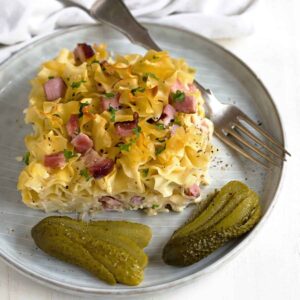
Šunkofleky – Czech Ham and Pasta Casserole
Equipment
- Baking dish 8x10" (20x25 cm)
Ingredients
- 16 ounces pasta (450 g) wide squares (fleky) or other type of pasta
- 9 ounces cooked ham (250 g)
- ½ Tablespoon unsalted butter to fry the ham
- ½ cup heavy cream (120 ml) fat percentage at least 30%
- ¾ cup whole milk (180 ml)
- 4 eggs
- 2 cloves garlic
- ¾ teaspoon black pepper ground
- 1 and ½ teaspoons salt
To dust the baking dish
- ¾ Tablespoon unsalted butter or other firm fat
- 2 Tablespoon breadcrumbs
To serve (optional)
- 4 dill pickles
- 2 Tablespoons parsley leaves chopped
Instructions
- Grease the baking dish with a pat of butter or another solid fat, and sprinkle it with breadcrumbs. Gently tap the dish on the work surface to remove any excess breadcrumbs.
- Peel and press the garlic cloves.
- Cook the pasta in salted water until tender, then drain. Follow the manufacturer's instructions on the packaging.
- While the pasta is cooking, dice the ham into 1/3-inch (0,7 cm) pieces. Heat a skillet over medium-high heat and let a knob of butter melt in it.
- Add the ham cubes and cook, stirring constantly, until their edges begin to brown. This will take about three to five minutes.
- Pour the milk and cream into a large enough container. Add the eggs and beat them with a hand whisk until a creamy, yellowish mixture forms.
- In a large bowl, combine the hot, drained pasta with the fried ham. Season with salt and pepper, and add the pressed garlic. Mix well. Finally, pour in the milk and egg mixture. Stir again thoroughly.
- Carefully transfer the mixture into the prepared baking dish, smoothing the surface evenly.
- Preheat the oven to 325°F (170°C), using the top and bottom heat, not the fan-forced circulation. Place the pan on the middle rack and bake for 30 minutes. Then turn off the oven without opening it, and leave the casserole sit in the oven for another 15 minutes to finish cooking.
Notes
- Makes 4-6 servings.
- How to serve: Serve the Šunkofleky warm. Cut the casserole into squares measuring about 5x5 inches (13x13 cm). Place each portion on a plate, and if desired, sprinkle with chopped parsley leaves. A pickled cucumber is also a great accompaniment on the plate.
- Attention! If you're using a cast iron or other heavy-duty baking dish, add 15 minutes to the baking time. Such a pan will need more time to heat up initially.
- Storage in the fridge: Cover the cold dish with foil and store it in the refrigerator, where it will last for up to five days.
- Can I freeze the Šunkofleky: Yes, Šunkofleky freezes wonderfully! Cut the leftovers into individual servings, place them in an airtight container, and store them in the freezer. Consume within three months.
- How to reheat? I have found the best way is to warm up the Šunkofleky in a skillet with melted butter. I slice the serving into bite-sized pieces and fry them on all sides over medium heat.
DISCLAIMER: Because I come from Central Europe, my recipes are based on metric units such as grams or milliliters. Check out how I convert metric units to the U.S. system:
Conversion chart

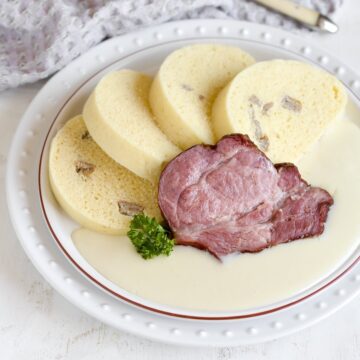
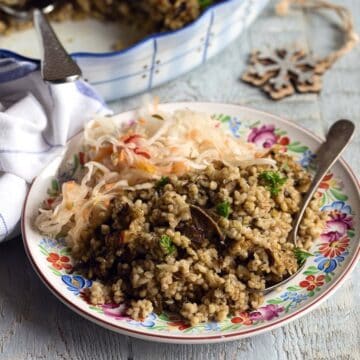
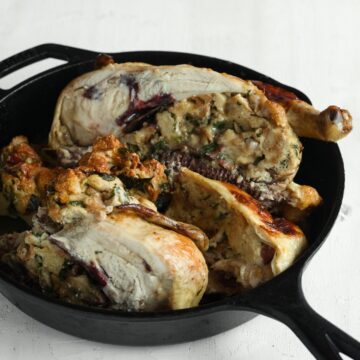
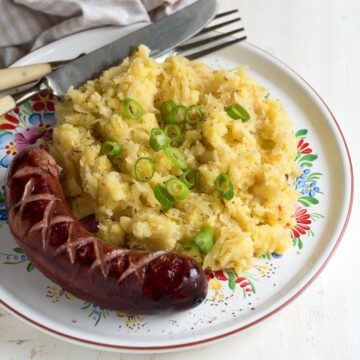
Vicki Fisher
So happy to find this receipe. Mainly to give to my sons and grandchildren and their friends who always wanted it when they were home or visiting. My mom use to make it all the time as I did and still do. I never knew it was suppose to be baked as my mother always just cooked it in a big frying pan.
Thank-you so much. I will try it the way the recipe is. Can't wait!
Would love more traditional czech family receipes!
Petra
Hello Vicki, thank you very much for your kind comment. Šunkofleky dish is very popular in my family, too. Easy to make and it always tastes great. Let me know if you try the recipe, I would be very happy. More traditional Czech recipes are waiting to be posted here! Many greetings from the Czech Republic, Petra
Ann Ince
Dear Petra- My husband’s maternal grandmother came from northern Italy when she was 5 years old. Both of our families went to the same church and because the families were friends I knew her my whole life(I’m 69 and my husband is 71). She has been deceased years now.
When we were to get married, one of the “rites” was my learning how to make from scratch homemade ravioli.
Another dish was called and spelled “Shunky Flakey”.
I couldn’t figure out why it was called that until tonight when I googled looking for a recipe to compare to the one the grandmother and aunt gave to me.
So the origin has been solved!
We’re making this for our extended family on 2022 New Years Day. Excited to be able to share this with them!!
Petra Kupská
Ann, thank you for your nice words! I'm glad I helped reveal the little secret of the Czech pasta recipe 🙂 Sunkofleky is a popular Czech dish that everyone can easily prepare (and everybody likes it too).
Allison
Petra,
I’m happy to have found this recipe and blog. I have been looking for a recipe like this. When I was a girl I remember making what my Grandma called “ham flakes” casserole with her. I would google it and only find ham casserole recipes with cream soup ingredients. I came across the Czech name of “flicky” seeing a dish offered at our local fish fry and googled that and found your recipe. This is what I remember. Simple noodles, ham and an egg mixture. I look forward to making this soon.
Petra Kupská
Ahoj Allison, thank you for your nice comment, I know the word "šunkofleky" is not easy to pronounce in another language. Flíčky (flicky) are smaller fleky. And you are totally right, this recipe is very easy to make! As we say in the Czech Republic: "Za málo peněz hodně muziky", freely translated this means: with only a few things you’ll get a great result! 🙂
Kristyna
I love your story on why you created this blog, and that your son is practicing writing in English. I immigrated from Prague to Oregon when I was younger and now I have two little boys. I came across your blog, and I love it. I grew up eating all these dishes. Tonight I made this one for the boys, I just added a little cheese on top for them. So delicious. Thank you for the recipes, I'll be trying out others as well.
Petra Kupská
Ahoj Kristyna, thank you very much for your lovely comment. I am happy you like this šunkofleky recipe, it is a dish everyone in my family loves as well. The idea with the cheese is great, sometimes, we add some grated Gouda or Eidam, too. Many greeting to Oregon from Liberec, special ones for your sons! 🙂 ????
Patti Komornik
My Mother and Grandmother and now I and my daughter make this often. Never had the correct name for it (we called it fleichsky...phonetic spelling). Recently had an international dinner at our church and found your blog. So happy to find out this is an authentic Czech dish. Made two large casseroles. Everyone loved it. Thank you and your sons. Many blessings to you all.
Petra Kupská
Hi Patti, thank you for your kind comment, which made me happy! This dish is most often called "šunkofleky" in Czech – the name includes two main ingredients: ham and "fleky," which are wide noodles cut into squares. Sending you warm greetings from the Czech Republic, Petra
Sandy
My mom and grandma used to make something similar to this recipe often. It was a very inexpensive meal. They called it flicky. All they used in their version was buttery egg noodles and ham. I didn’t much care for it, but your version with the eggs sounds much better. I will have to give it a try. I am really enjoying reading your recipes. Reminds my of my mom and grandmothers and the good old days. I miss those days.
Petra Kupská
Thank you very much for your kind words. Flicky (flíčky) is a diminutive of the word fleky, the shape of pasta typical for the Czech Republic. If you decide to try this dish, I would be very grateful for your feedback.
I like to believe that we have a childhood associated with fond memories of our parents who prepared delicious dishes for us. And Czech cuisine has always offered really delicious meals 🙂
E.houdek
I’m so glad to find this recipe! This was a meal my grandfather would make the day after Christmas. This recipe and houska bread were stable meals in with bohemian / Czech grandfather.
Petra Kupská
Happy to hear this! Exactly as you write, both recipes (sunkofleky and houska/vanocka bread) are very popular among Czechs even today 🙂
Sherri
I have a question! My grandmother coming from there ❤️ made this dish growing up and I can’t get it exactly right. She is passed now and her recipes were by her memory. Did you ever milk to this dish?? I think she used milk and she used the fattiest part of the ham and ground it I believe.?
Thanks so much! Can’t wait to try yours but maybe me always trying to use milk is where I am going wrong!! ❤️
Petra Kupská
Ahoj Sherri, thank you for your lovely comment! The recipe for sunkofleky is very versatile; I'm sure every mom or granny used their own process and slightly different ingredients. I imagine your grandmother added a little milk to the recipe, the result might have been more tender. The same with the type of ham: the Czechs always processed the whole ham, including the fattier parts, which were added to this kind of meal (casseroles etc.). The fat adds flavor to the food, plus the pasta is not as dry. My honest tip: Don't use the fan-forced function when you're making sunkofleky in the oven. The circulating air will dry out the food, and the pasta will be hard on the surface. Wishing you luck! 🙂
Michele
My grandmother from Czechoslovakia and used to make this recipe. We called it “Baba” after her mother since she used to have it as a little girl. It is a little different from the recipe. She used whipping cream and eggs. We also loved the top to get golden brown for those crispy crunchy noodles! We would fight over them! So yummy!
Anicka Cooklikeczechs.com
Ahoj Michele, what a lovely comment. It sounds wonderful - thank you so much for sharing this! I am happy the recipe brought back nice memories.
Olga Giorgi
i like to ground my ham it gives better distribution to the pasta
Petra Kupská
Thanks for sharing this tip with us, Olga!
Adam
Do you think I could use left over flat lasagna noodles broken into smaller pieces instead of Fleky?
Petra Kupská
You probably can, but I find it easier to use fusilli or farfalle (pasta shapes). If you feel like trying homemade pasta, check out this recipe:
https://www.cooklikeczechs.com/egg-noodles-for-soup/
Simply cut wider strips from the rolled-out dough and then cut those into squares (fleky). The homemade pasta in this recipe is incomparable to store-bought, I'm happy to confirm!
Dona
I’ve searched forever for this recipe! My grandma and aunt used to make this, knew how to pronounce it but didn’t know how to spell it!
I just happened to come across it when I was looking at your liver dumpling recipe!
Thank you! I’ll be making it very soon (with ham though, just like grandma)
Petra Kupská
Thank you, Dona, for your nice comment! I think sunkofleky is a typical Czech meal, best tasting made by moms or grannies (in my experience 🙂 I will be very happy if you like the dish as much as you remember your mom and aunt making it!
Stacie
My family has Bohemian roots. I grew up eating this made with packaged egg noodles and diced hot dogs since it was a cheap and easy way to prepare it. Oddly enough, we ate it with ketchup, not pickles. I wanted to see how it was traditionally prepared and served. I look forward to trying this recipe. Thanks for sharing.
Petra Kupská
Hi Stacie, thank you for your nice comment! Sunkofleky has many options to make them. You're right that this is a cheap meal that you can work all sorts of leftovers into, and yet they'll still taste wonderful 🙂 Good luck with the cooking and let me know how you liked it!
Diana
My mom, who came from Czechoslovakia, made this often when I was growing up, especially after Easter with leftover Easter ham. She did it a little differently. She separated the eggs and beat the egg whites into soft peaks and then folded them into the mixture of noodles and ham. Then she mixed the yolks with a fork and folded them in.
I find Mrs. Miller's Pot Pie Square, which are an Amish noodle, work well.
Petra Kupská
Actually, sunkofleky is a food made from leftovers, and there are numerous recipes for them. You can't go wrong with any of them, in my opinion. Thank you also for the specific tip on noodles, because Czech "fleky" pasta is not easy to find in the shops abroad!
Ann Semes Lynch
Hi Petra, my Baba never made this dish for us but I’m going to make it. Her meals were chicken soup, ham, potatoes. Does one est this for breakfast or dinner?
Anicka Cooklikeczechs.com
Ahoj Ann, thank you for your comment! Please let me know how the cooking turns out afterwards! Thank you for asking - sunkofleky are usually eaten for lunch or dinner 🙂
Frederic
My grandmother added sour cream to this recipe.
Sherry B
Thank you Petra for this recipe and all your posts. They bring me back to my childhood with extended family dinners. I appreciate your pronunciation audio to help me with my own. My grandmother made a version of Sunkoflecky with thinly sliced cabbage and onion added to the ham to sauté , then cooked noodles tossed in and served without baking. Delicious then and now, I love to think she can watch over me as I make her recipes.
Petra Kupská
Thank you, Sherry, for your kind words and also for sharing your memories!
Frederick
Thank you, Petra, for reminding me of a wonderful dish that my mom and aunt prepared many years ago at my grandfathers. I made the dish myself after finding the recipe on your site and it turned out great! Thanks again.
Petra Kupská
I thank you for your kind words, Frederick!